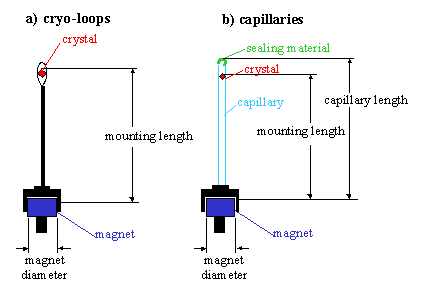- Home
- Users & Science
- Find a beamline
- X-ray nanoprobe
- ID13 - Microfocus Beamline
- ID13 Handbook
- ID13 Sample Environment
ID13 Sample Environment
ID13 Sample Environment
This section covers aspects of what sample environments are available for use at ID13, and also what sample preparation should be performed prior to an experimental visit.
There are several possibilities regarding the sample environment on ID13 depending upon the application. These are as follows:
Scanning Setup (SAXS/WAXS experiments)
Sample environment options for the scanning setup are more flexible than those for microdiffractometer applications. For small samples a microgoniometer may be used.
The scanning setup also permits the use of larger sample environments such as deformation rigs or bulkier sample supports. For in-situ deformation, ID13 has three stretching cells suitable for small samples (such as fibres).
Prior to designing or bringing any in-situ equipment for beamline mounting it is advisable to contact ID13 staff. For large devices, it is also recommended to send via e-mail a model of the equipment in Autocad or Solidworks format. This will allow easier integration onto the beamline prior to the start of an experiment and ensure that the dimensions of the equipment are compatible with the desired experimental setup.
Scanning setup (crystallography experiments)
For Crystal Diffractometry on ID13, cryo-loops and capillaries are the most common methods for using the microgoniometer. As there is an integrated motorized sample centering system it is not possible to use your own goniometer heads. All samples should be mounted on magnetic bases fitting to a magnet diameter of 9.5 mm (HAMPTON magnet).
For using cryo-loops (for applications such as sensitive protein crystals) HAMPTON loops with thin pins are best. The thick (copper) pins will most likely cause problems because they provoke icing on the cryo-geometry (use thin pins only please). The optimum mounting length is 25 mm (magnet touching surface to sample distance). The minimum mounting length is 20 mm (it increases the danger of icing with shorter loops) and the maximum mounting length is 26 mm.
Capillaries are best suited for sensitive micro-crystals which require no cooling. Capillaries should also be mounted on magnetic bases with a mounting length of 20-25 mm (magnet touching surface to sample distance). The maximum capillary length is equal to the mounting length (20-25 mm) plus 3 mm.

A liquid nitrogen cryostream (Oxford Instrument) is also available for crystallography experiments in EH2 to be performed at temperatures down to 100 K.



